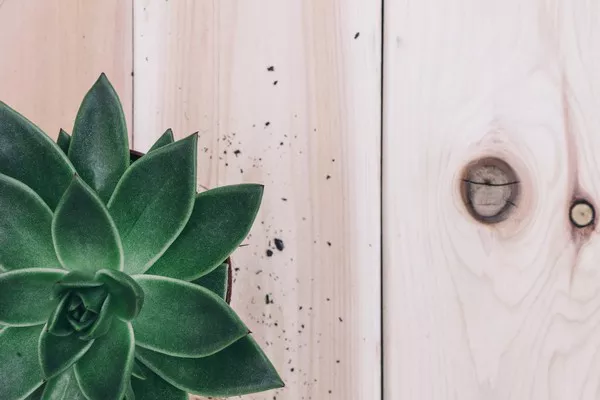Succulents, renowned for their resilience and captivating aesthetic, have gained widespread popularity in the realm of indoor and outdoor gardening. Their ability to store water in their leaves and stems makes them well-suited for arid environments and low-maintenance care. However, a key factor that profoundly influences their growth, health, and overall longevity is sunlight. In this article, we will delve into the crucial relationship between succulents and sunlight, exploring their sunlight requirements, the effects of insufficient sunlight, strategies for optimizing light exposure, and tips for succulent care in various settings.
Succulent Sunlight Requirements: Unveiling the Necessity
Sunlight is a fundamental component of photosynthesis – the process through which plants convert light energy into chemical energy, fostering growth and sustenance. Succulents, while capable of surviving in various conditions, thrive when provided with adequate sunlight. Typically, succulents require at least six hours of indirect or direct sunlight daily to maintain optimal health.
Indoor succulents often struggle to receive the appropriate amount of light, leading to a host of challenges. For instance, Echeveria, a popular succulent variety, may lose its vibrant colors and start to stretch or become etiolated when deprived of adequate light. This phenomenon highlights the importance of mimicking their natural habitats, where they receive ample sunlight for vigorous growth.
The Consequences of Insufficient Sunlight: A Tale of Deterioration
When succulents are deprived of sufficient sunlight, a cascade of adverse effects can unfold, gradually weakening the plants and diminishing their allure. One of the most notable consequences is etiolation, characterized by elongated, weak stems and pale leaves. Etiolated succulents become more prone to bending, breaking, and pest infestations, leading to an overall decline in vitality.
Moreover, succulents lacking sunlight may experience a decrease in chlorophyll production, resulting in a faded appearance and reduced photosynthetic capacity. This hampers their ability to generate essential energy and nutrients, further compromising their overall health. As a last resort, succulents may redirect energy from growth to survival mechanisms, triggering leaf shedding to conserve water and resources. Ultimately, without access to sunlight, succulents are susceptible to diminished aesthetics and weakened physiological resilience.
Strategies for Optimizing Sunlight Exposure: Nurturing Succulent Flourish
1. Proper Placement: Placing succulents in locations where they can receive adequate sunlight is paramount. South-facing windowsills or well-lit areas are optimal choices for indoor succulents. Outdoor succulents thrive in spaces that offer partial sunlight with protection from intense midday rays.
2. Gradual Acclimatization: Moving succulents from low-light to high-light environments should be a gradual process. Abrupt exposure to intense sunlight can shock the plants and lead to sunburn. Slowly increase their exposure over several days to allow for adjustment.
3. Artificial Lighting: Supplemental lighting, such as fluorescent or LED grow lights, can be employed to provide the necessary light spectrum for succulent growth. Timer-controlled artificial lighting can ensure consistent exposure and prevent overexertion.
4. Rotational Strategy: Regularly rotate potted succulents to ensure uniform light distribution on all sides. This prevents uneven growth and encourages symmetrical development.
5. Outdoor Considerations: Outdoor succulents require attention to their specific sunlight preferences. Some species prefer direct morning sunlight and shade during the afternoon to avoid scorching, while others can tolerate more direct sunlight throughout the day.
6. Seasonal Adaptation: Recognize that sunlight intensity changes with the seasons. Adjust the placement of your succulents accordingly to account for shifting sun angles and light availability.
Careful Consideration for Various Settings: Indoor, Outdoor, and Container Gardening
1. Indoor Succulent Care: Indoor environments often present challenges in providing sufficient sunlight. To mitigate this, place succulents near windows with abundant indirect light. If natural light is limited, supplement with artificial lighting.
2. Outdoor Succulent Care: Outdoor succulents benefit from the sun’s full spectrum. However, be cautious of extreme temperatures and sun exposure during the hottest part of the day. Mulching can help regulate soil temperature and moisture levels.
3. Container Gardening: Potted succulents offer flexibility in light management. Opt for containers with proper drainage and move them as needed to optimize sunlight exposure. This is especially valuable for regions with harsh climates.
4. Desert Succulents: Species originating from desert environments are more tolerant of intense sunlight. These succulents can thrive in full sun conditions but still benefit from protection during scorching midday hours.
5. Shade-Loving Succulents: Some succulent varieties, such as Haworthia and Gasteria, prefer filtered or indirect light. These can be placed in areas with reduced sunlight, like east-facing windowsills or shaded garden spots.
Conclusion
In the world of succulent cultivation, the role of sunlight cannot be understated. A delicate balance between adequate light exposure and preventing overexposure is crucial for ensuring the longevity, health, and aesthetic appeal of these remarkable plants. Recognizing the diverse sunlight requirements of different succulent varieties, acclimatizing them effectively, and implementing strategic care practices can all contribute to their successful growth. Whether adorning indoor spaces, enhancing outdoor landscapes, or thriving in containers, succulents stand as a testament to the intricate interplay between nature and nurturing care.


